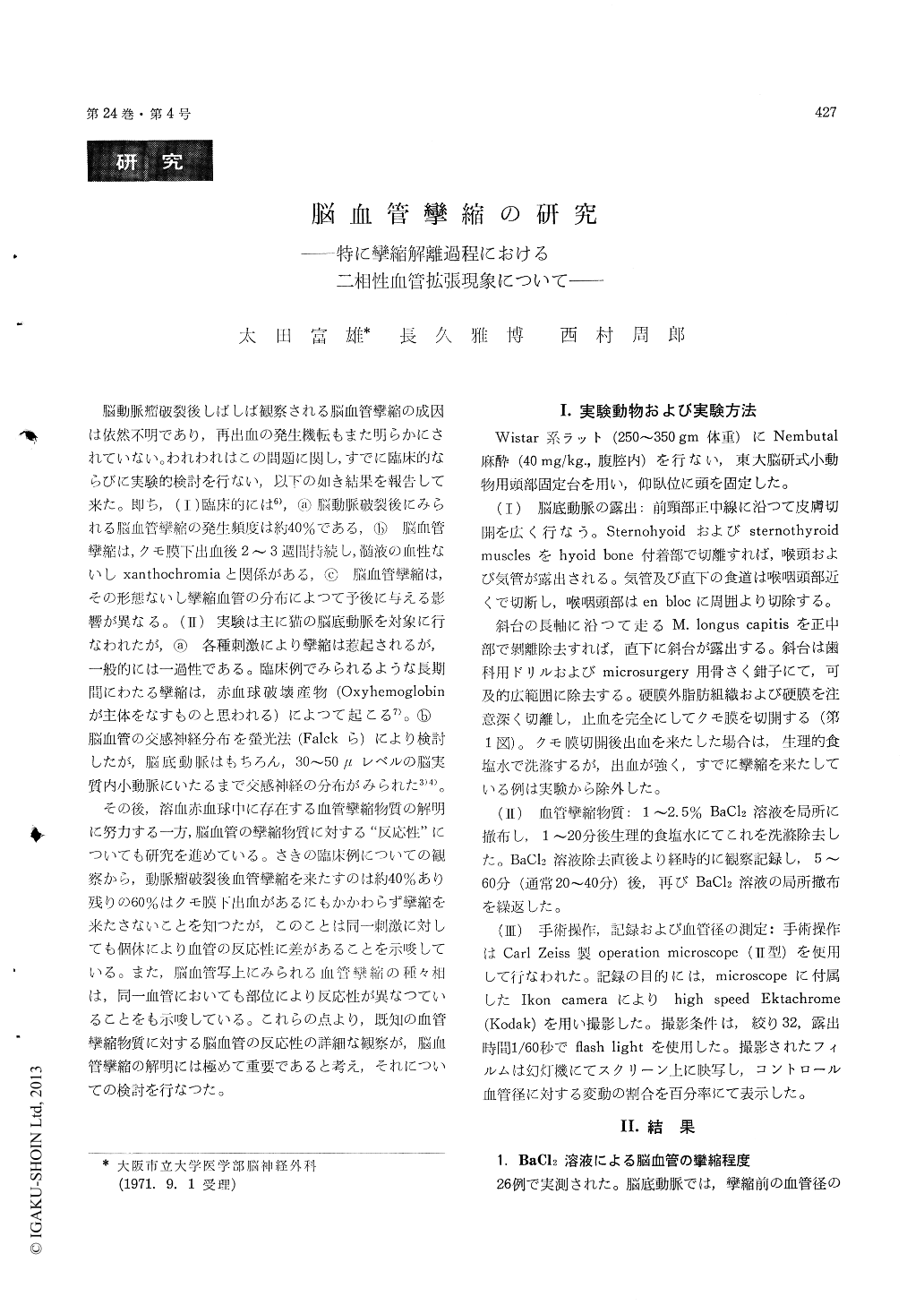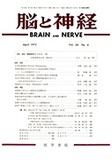Japanese
English
- 有料閲覧
- Abstract 文献概要
- 1ページ目 Look Inside
脳動脈瘤破裂後しばしば観察される脳血管攣縮の成因は依然不明であり,再出血の発生機転もまた明らかにされていない。われわれはこの問題に関し,すでに臨床的ならびに実験的検討を行ない,以下の如き結果を報告して来た。即ち,(I)臨床的には6),(a)脳動脈破裂後にみられる脳血管攣縮の発生頻度は約40%である,(b)脳血管攣縮は,クモ膜下出血後2〜3週間持続し,髄液の血性ないしxanthochromiaと関係がある,(c)脳血管攣縮は,その形態ないし攣縮血管の分布によつて予後に与える影響が異なる。(II)実験は主に猫の脳底動脈を対象に行なわれたが,(a)各種刺激により攣縮は惹起されるが,一般的には一過性である。臨床例でみられるような長期間にわたる攣縮は,赤血球破壊産物(Oxyhemoglobinが主体をなすものと思われる)によつて起こる7)。(b)脳血管の交感神経分布を螢光法(Falckら)により検討したが,脳底動脈はもちろん,30〜50μレベルの脳実質内小動脈にいたるまで交感神経の分布がみられた3)4)。
その後,溶血赤血球中に存在する血管攣縮物質の解明に努力する一方,脳血管の攣縮物質に対する"反応性"についても研究を進めている。さきの臨床例についての観察から,動脈瘤破裂後血管攣縮を来たすのは約40%あり残りの60%はクモ膜下出血があるにもかかわらず攣縮を来たさないことを知つたが,このことは同一刺激に対しても個体により血管の反応性に差があることを示唆している。また,脳血管写上にみられる血管攣縮の種々相は,同一血管においても部位により反応性が異なつていることをも示唆している。これらの点より,既知の血管攣縮物質に対する脳血管の反応性の詳細な観察が,脳血管攣縮の解明には極めて重要であると考え,それについての検討を行なつた。
Experimental spasm has been produced by localapplication of one to 2. 5% barium chloride solution to the rat's basilar artery and its branches. They have been reduced to about a third of their original width. Any difference has not been recognized regarding the grade of the spasm between the basilar artery and its branches. Different patterns of vasospasm have been observed similar to the angiographic demonstration of the vasospasm after the rupture of intracranial aneurysms. This means that there is a difference of vascular reactivity in the different parts of one vessel.
Biphasic vasodilatation has been observed in therelease process of vasospasm. One is the earlyvasodilatation which occurs immediately after re-moval of barium chloride solution and disappearswithin a few minutes. The other is the late vasodi-latation which appears at the end of the releaseprocess and continues for a longer time, at leastone hour.
Relationship between biphasic vasospasm proposedby Brawley et al. (1968) and biphasic vasodilatationobserved in the present experiment has been dis-cussed, and also a clinical case who suggests post-spastic vasodilatiaton has been demonstrated with theusual and gamma angiographies after the ruptureof the intracranial aneurysm. Ideas of postspasticvasodilatation have been proposed for explanationof the recurrence of intracranial aneurysms.

Copyright © 1972, Igaku-Shoin Ltd. All rights reserved.


